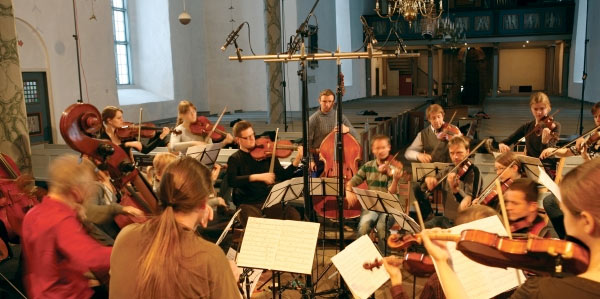Surround Mixes or Recordings
My friend and fellow label owner/engineer/producer Morten Lindberg posted a link on FB yesterday to an article on surround mixing. It highlighted a number of prominent surround mixing engineers and their approaches to producing surround music projects. Included in the piece are interviews with Bob Clearmountain, Frank Filipetti, Jim Anderson, David Fridmann, Nick Davis, Ronald Prent, Morten Lindberg, Martin Walters, Keith O. Johnson and Greg Penny. You can read the article at Music in 5.1 Dimensions
What struck me were the comments that Morten made and how his approach is so dramatically different than all of the others in the article. I don’t know if this is because he isn’t working for a traditional record company making traditional recordings or whether his audiophile sensibilities are met with a more natural methodology, but I found it worth discussing today.
The article includes the following paragraph:
“A good surround sound is not created in a mix,” says Morten Lindberg, a Norwegian producer and engineer who has racked up no fewer than six GRAMMY nominations for Best Surround Album. “It is made in the recording with dedicated microphone techniques. The composers and musicians should perform to the extended three-dimensional sonic sculpture, allowing more details and broader strokes.” With this approach, some of Lindberg’s most engaging recordings aim to put the listener in the center of a group of musicians performing ‘in the round’ in a brilliant natural acoustic space. This is done almost exclusively at the point of capture. The original surround experiences that Lindberg creates have become so successful that he has begun to focus on them primarily, and it seems to have become a sustainable business model for him. Today, Lindberg’s own company, 2L, releases several new 5.1 works each year in high definition Blu-Ray, SACD and streaming HD formats, for a vibrant niche market of audio lovers.
Whereas the rest of the engineers in the piece, AND the standard operating procedure for surround music mixing, create their 5.1 or 7.1 scoundscapes using consoles and electronics in the studio, Morten captures an ensemble of musicians and the entire acoustic space that they are in using an 5.1 array of microphones. Essentially, there is a mike for each of the 5 speakers in a typical surround playback environment (LF CF, RF, LS and RS). The recorded signals are then routed to an associated amplifier and speaker.
Morten has been very successful with this approach and there is even a course being offered that instructs up and coming engineers to record using this method.
I follow a different approach. I have listened to many of Morten’s recording and they are all available on the iTrax.com website for download. They are terrific recordings and contain a great deal of ambient sound as well as the output from the ensemble of musicians. But I find them too distant sounding. I prefer the closeness of a stereo pair of microphones placed within a couple of feet of the performers.
Does it really make sense for a central collection of microphones to reappear in along the perimeter of 5.1 spaced speakers? It seems a bit of a mismatch to me.
The intimacy of the resulting tracks is maintained AND I can prepare a number of different surround mixing perspectives. These are the “stage” and “audience” versions that I include on all of my recordings. I’ll place a couple of examples on the FTP site for those that haven’t heard the different mixing perspectives.
So the questions is really whether you prefer to capture the surround music at the source or want to bring the individual tracks back to the studio and create the surround mix or mixes in the studio. There is no right or wrong way to arrive at a surround music presentation. Morten and his company 2L have been very successful in garnering Grammy nominations, so he must be giving the judges something that they find compelling.
But I still believe in the flexibility and sound of the tracks that I produce. Take a listen and see what you think. At least we’re talking about surround music for a change.


Hi again Mark. I have several 2L surround recordings and most of the AIX catalogue.
I would like to ask if you think that the miking techniques highlighted in your article would vary according to the style of music? Obviously 2L’s releases are classical and I see Mr. Lindberg’s method as great for acoustic instruments, but doesn’t all that go out the window when amplified instruments are involved?
I use the same miking techniques for orchestras, chamber music, solo piano and the pop, jazz and acoustics stuff the I’ve recorded. The NJSO “Pines of Rome” recording has so much more impact for me than the distant miking that is traditionally used. Things are just more intimate and detailed…which works for my sensibility.
In the case of electronic instruments, I just put the stereo pair of microphones in front of the sound source…the amplifier. Same procedure as for the classical recordings. I guess a sound source is a sound source.
The best thing about recording with lots of stereo pairs is that it allows me to provide different mixing perspectives. I’m a fan of being in the middle of the ensemble but others have other preferences.
That makes perfect sense, thank you.
May I congratulate you on the fabulous “Mercy Of The Wheels” ( John Gorka) track.
I am not familiar with that microphone used for vocals?